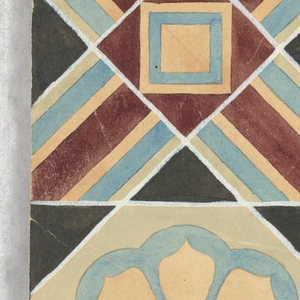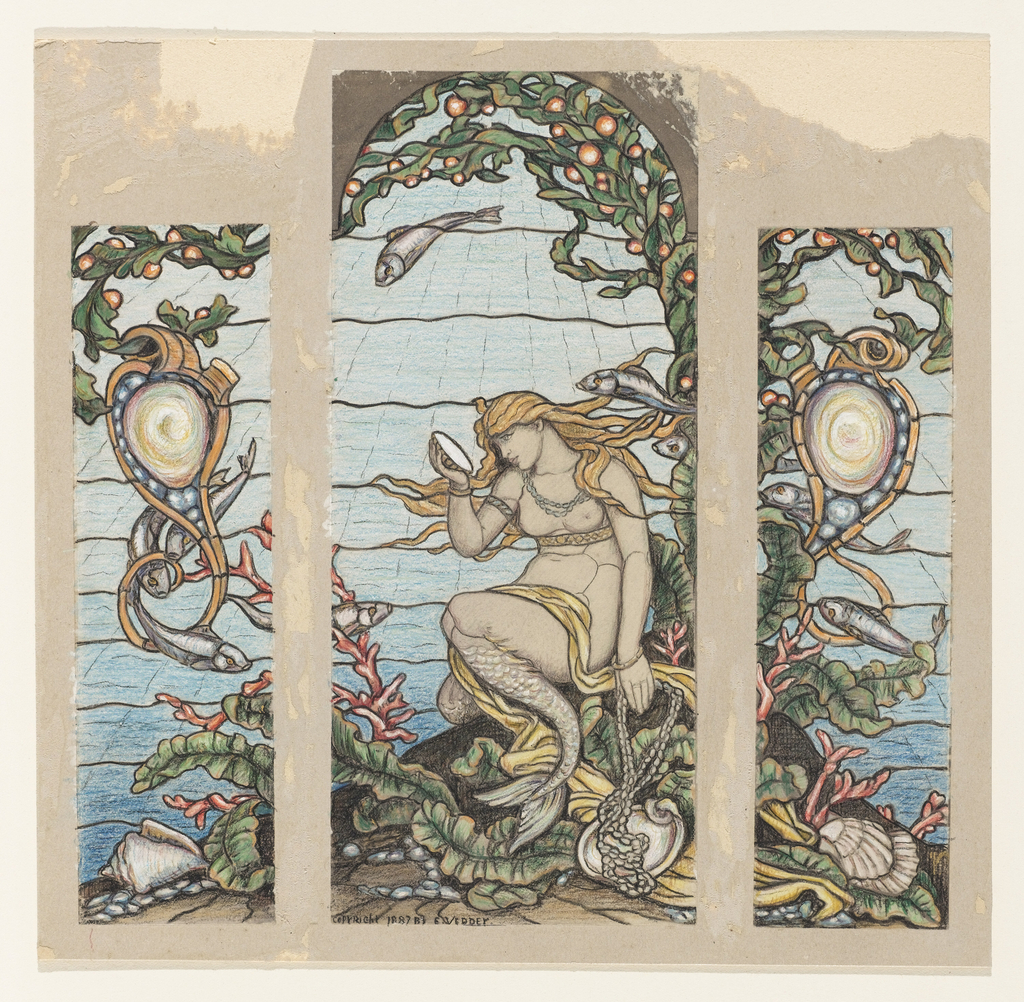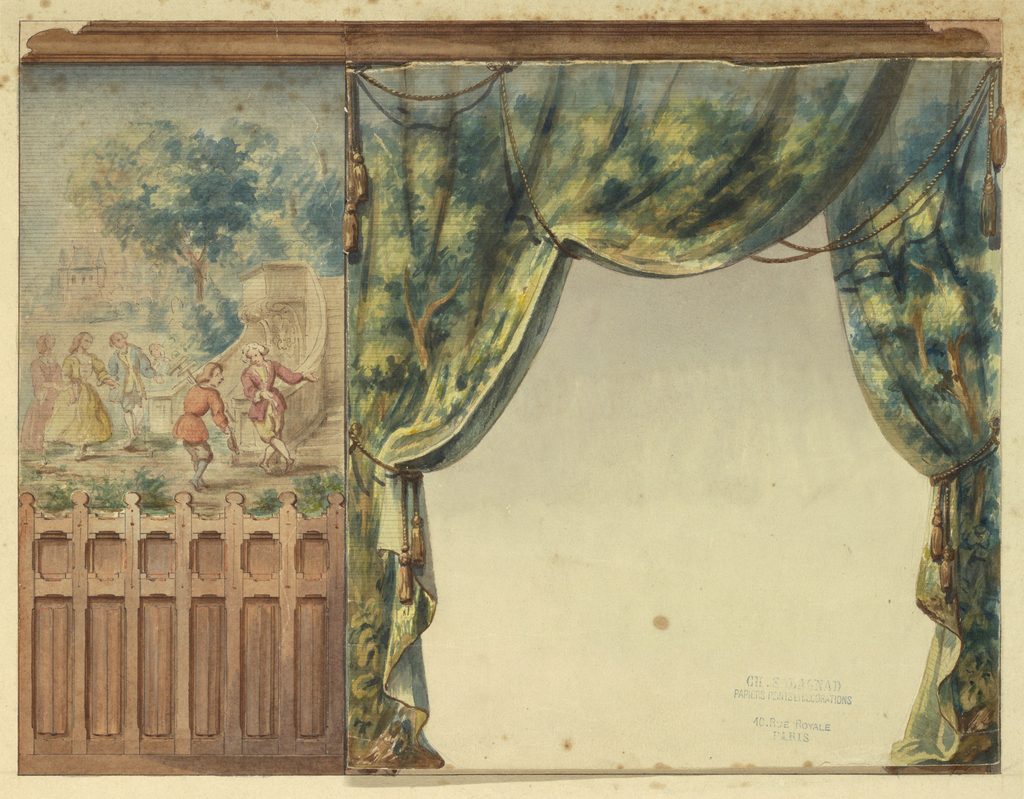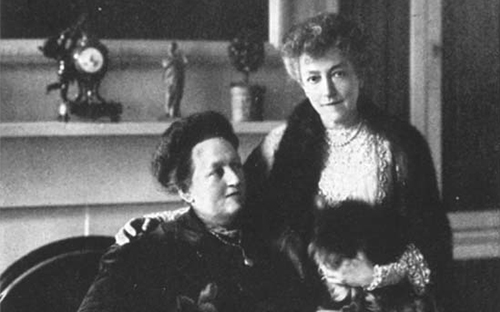In last month’s Short Story, Ringwood Historian Sue Shutte cleverly drew parallels between the collections of Ringwood Manor and Cooper Hewitt, giving insight to the Hewitt family’s personal style. In this month’s short story—or more of a collection spotlight—we look at more passions of Sarah and Eleanor and how they emanate through Cooper Hewitt’s collection:...
Frederick Krieg’s colorful design for a two-part part tile pattern is depicted in a three by three grid. The result is an alternating composition that maintains unity through repeated colors (light blue, bisque, and charcoal) and angles (hexagonal and inverted). Krieg’s precision is all the more impressive given the medium: watercolor paint. A self-taught designer...
Perhaps better known for his illustrations of the Rubáiyát of Omar Khayyám, Elihu Vedder’s prolific career began in the 1860’s, when the Hudson River School was in its prime, and ended in the early 20th century, when Modernism was taking root. His work, influenced by the Pre-Raphaelites, captured the imagination of late 19th-century audiences. Born...
Charles Salagnad made this drawing in 1872, during a phase of renovations at the now-famous Newport mansion, Château-sur-Mer. The house was built two decades earlier for the wealthy China trader William Shepard Wetmore (1801-1862). Wetmore’s newly married son, George Peabody Wetmore, commissioned one of Gilded Age society’s preferred architects, Richard Morris Hunt, to transform his late...
Two years ago, we launched a series of monthly blogs titled “Meet the Hewitts” in order to provide a social history of the Cooper Union Museum and its founders—sisters Sarah and Eleanor Hewitt—from 1859 to Sarah Hewitt’s death in 1930. We are supplementing that history with “Cooper Hewitt Short Stories,” brief observations about prominent figures...




